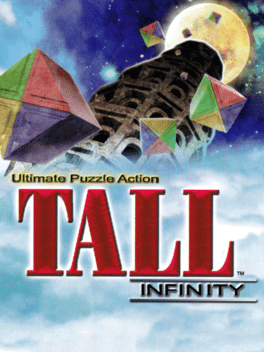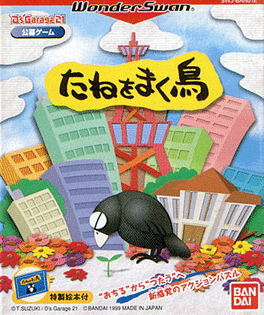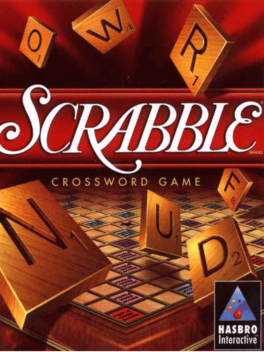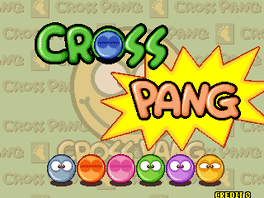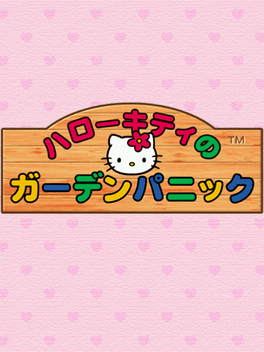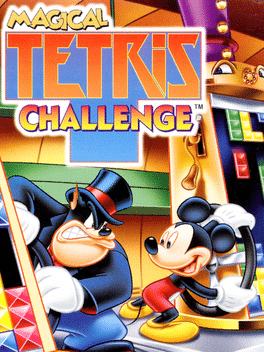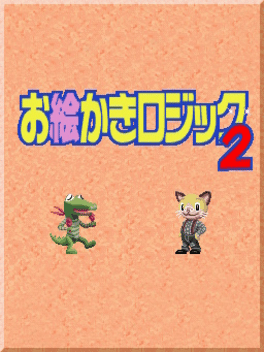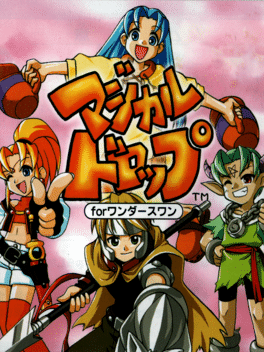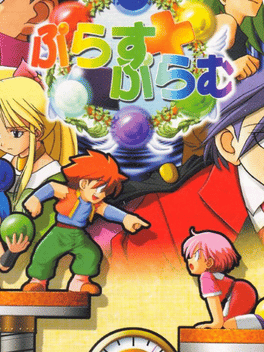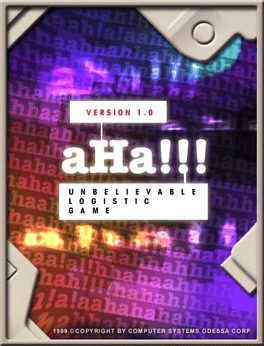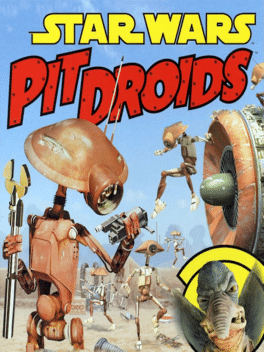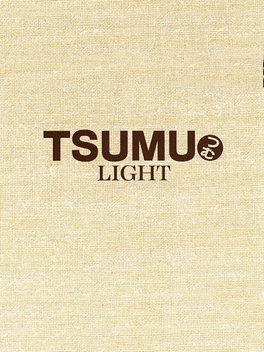New Puzzle Games - Page 266
-
XI Sai Jumbo
1999
XI Sai Jumbo
1999
XI JUMBO was released as a sequel to Devil Dice only released in Japan. The rule is similar to its predecessor, but in this version, you can stack the dice vertically by lift up or jump with a die. The classical "Trial - Time Limited" and "Puzzle" modes are also available on this version. For new features, The "Battle" mode is entirely renewed with a garbage-attacking style. In addition, a new task-solving trial, named "Norma Attack," is introduced. -
Tall Infinity
1999
Tall Infinity
1999
Tall Infinity is a single-player puzzle game where users manipulate multi-colored blocks to construct a tower. The main game consists of eight stages, with players needing to complete ten floors of the tower to pass each stage. Players must avoid unnecessary moves or risk losing the game. There are three difficulty levels, and two additional game modes: time attack and endless play. -
D's Garage 21 Koubo Game: Tane wo maku tori
1999
Tane o Makutori is a Puzzle game, developed and published by Bandai, which was released in Japan in 1999. -
Super BomBliss DX
1999
Super BomBliss DX
1999
Super Bombliss DX is a colorized remaster of Tetris Blast. It is a Japanese-exclusive and contains all the features of Blast, with the addition of a Puzzle mode. It features a different soundtrack and revises the appearance of the enemies in "Battle" mode. -
Mingle Magnet
1999
Mingle Magnet
1999
Mingle Magnet is a simple puzzle game of the falling block variety. The player oversees a 10 x 10 square field where the first four rows (three on easy) have been filled by blocks. Each block shows one of three symbols, a dark gray circle, a light gray circle, and a white circle. When ever any of blocks with matching symbols touch they will form a link. By moving the cursor over a chain and clicking on it the player will be given points based on its size on the chain will be removed. The goal is to get a large score while making sure that new pieces can still enter the field. Once no more pieces can enter the game ends. Blocks fall at the same time one square apart, when the next set of blocks fall they will occupy the space given by the previous drop. The "magnet" aspect of Mingle Magnet come into play in how the player can control the placement of the blocks. All the blocks are attracted to a magnet which, although not seen, can be placed on any side of the field. All blocks will be drawn to the magnet. For exam -
Picross NP Vol. 5
1999
Picross NP Vol. 5
1999
The fifth of a series of eight Picross puzzle games distributed over the Nintendo Power cart-writing service. This part includes puzzles featuring characters from The Legend of Zelda: Ocarina of Time. -
Scrabble: Crossword Game
1999
Hasbro Interactive's best-selling computer title based on one of the world's most famous word games has made the translation to the PlayStation with real-time 3D graphics and support for up to four players. As with the two previous CD-ROM games, Scrabble for the PlayStation even contains the Merriam Webster's Official Scrabble Player's Dictionary, 3rd Edition, so players can look up definitions to certain words (not all are available, however) and determine if a word actually exists. For those unfamiliar with the board game from which this title is based, Scrabble involves forming words using wooden tiles representing individual letters. These tiles are then placed into rows on a board made up of 225 spaces. Each letter is worth a certain point value, and some of the spaces will offer specific bonuses if you manage to build off them. The player with the most points after all the tiles have been placed on the board is considered the winner. The PlayStation version follows this same format, but with automatic scorin -
Cross Pang
1999
Cross Pang
1999
A brand new coin-op video amusement game the Cross Pang which more often called Toads’ Raid depicts a folk tale of an ancient kingdom clearing through national threat imposed by toadstools suddenly sprouted and proliferated rapidly over the kingdom disastrously. Noticing that toadstols shaped in beads of seven different colors burst up to perish when four of a color are flocked together, the royalty ordered the subject to flock them by colors thus to save the nation. Repetition of perishing four beads for preset number of times advances the player to next stage, stage by stage in likewise manner, towards the final goal of 50th stage to complete a game. In case the player fails to stop beads piling up to reach the ceiling for set length of a time, the game becomes automatically over. -
Little Magic
1999
Little Magic
1999
Little Magic is a Puzzle game, developed and published by Altron, which was released in Japan in 1999. -
Hello Kitty no Garden Panic
1999
Hello Kitty no Garden Panic is a Japan exclusive puzzle game based on Hello Kitty. The game was only sold inHello Kitty branded Dreamcast bundles. -
Oekaki Logic 2
1999
Oekaki Logic 2
1999
Oekaki Logic 2 is a Puzzle game, published by Sekaibunka Publishing, Inc., which was released in Japan in 1999. -
Kids Tetris
1999
Kids Tetris
1999
Kids Tetris is a variation of the classic Russian puzzle game geared towards children. The main characters of the game are the Minos, the pieces that make up the Tetris board. There are four locations where you can play Tetris: the circus, the fire station, the laboratory, and the haunted house. Each board requires a certain amount of lines to be cleared to win Tetris. Since the game is a variation for children, the blocks start out small and fall down slowly. As the game progresses, the pieces become more complex and they fall down faster. After you win, there are many toys and stage props that you can play with in the activity center. You can also print out coloring pages based on the game and a certificate for each stage you play. The game supports both single player and multiplayer. The game is playable with the on-screen mouse controls or the keyboard. -
Magical Drop for WonderSwan
1999
Magical Drop for WonderSwan is a Puzzle game, developed by Gaibrain and published by Data East, which was released in Japan in 1999. -
Plus Plumb
1999
-
Picross NP Vol. 4
1999
Picross NP Vol. 4
1999
The fourth of a series of eight Picross puzzle games distributed over the Nintendo Power cart-writing service. This part includes puzzles featuring characters from Star Fox 64. -
Aha!
1999
-
Star Wars: Pit Droids
1999
star 6.9The pit droids go through 300 different puzzles, each randomly selected for eight levels. At first, your droids start at the Transport Ship, ending at the final level, the Arena. In each puzzle, you need to get 48 droids into the portal; if you get only a few number of droids, you advance with only that number. With each puzzle you complete, you gain points. Each level you unlock, you get a humorous pit droids clip. The levels are located in Tatooine. There are many different numbers of different types of obstacles and restriction. With different types of arrows, you can also make your own puzzles. Depending on the puzzles, there are certain factors: Different tools- wrench, ladder, gas tank, cases, or nothing. Sometimes there are obstacles which give your droids tools; Different colored heads, body, or same colored head and body. Sometimes there are painting obstacles that paint the body or head; Square or Hexagonal grid; Space between droids- if you have space, you can cross droid paths, with out it, they crash -
Tsumu Light
1999
Tsumu Light
1999
Follow up to the 3D puzzle game Tsumu, both only released in Japan for the original Playstation.

